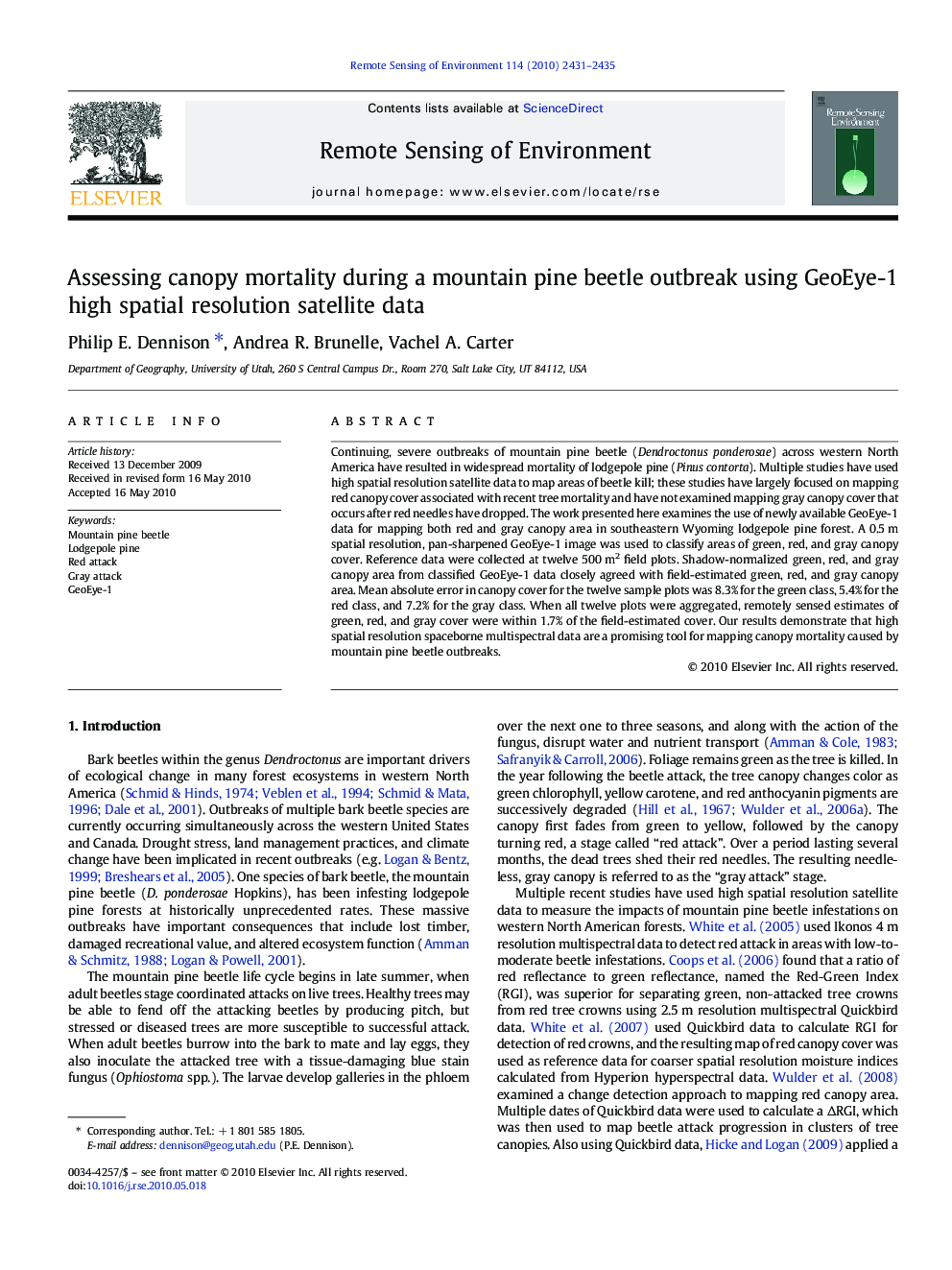| Article ID | Journal | Published Year | Pages | File Type |
|---|---|---|---|---|
| 4459820 | Remote Sensing of Environment | 2010 | 5 Pages |
Continuing, severe outbreaks of mountain pine beetle (Dendroctonus ponderosae) across western North America have resulted in widespread mortality of lodgepole pine (Pinus contorta). Multiple studies have used high spatial resolution satellite data to map areas of beetle kill; these studies have largely focused on mapping red canopy cover associated with recent tree mortality and have not examined mapping gray canopy cover that occurs after red needles have dropped. The work presented here examines the use of newly available GeoEye-1 data for mapping both red and gray canopy area in southeastern Wyoming lodgepole pine forest. A 0.5 m spatial resolution, pan-sharpened GeoEye-1 image was used to classify areas of green, red, and gray canopy cover. Reference data were collected at twelve 500 m2 field plots. Shadow-normalized green, red, and gray canopy area from classified GeoEye-1 data closely agreed with field-estimated green, red, and gray canopy area. Mean absolute error in canopy cover for the twelve sample plots was 8.3% for the green class, 5.4% for the red class, and 7.2% for the gray class. When all twelve plots were aggregated, remotely sensed estimates of green, red, and gray cover were within 1.7% of the field-estimated cover. Our results demonstrate that high spatial resolution spaceborne multispectral data are a promising tool for mapping canopy mortality caused by mountain pine beetle outbreaks.
